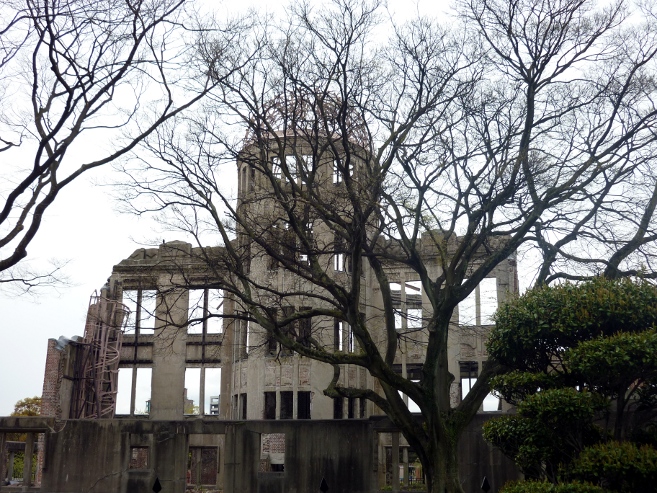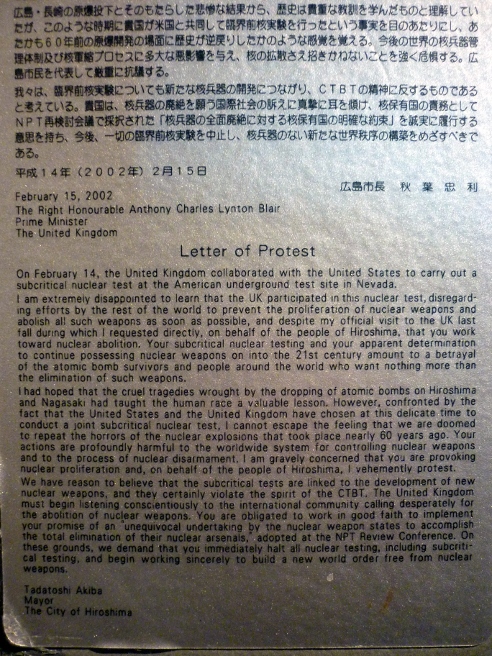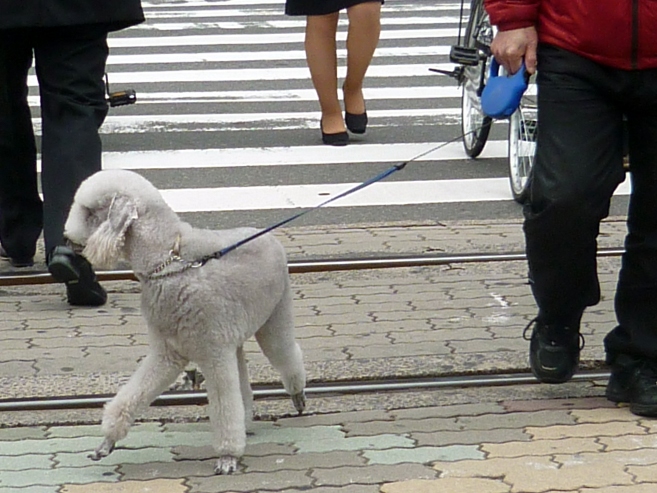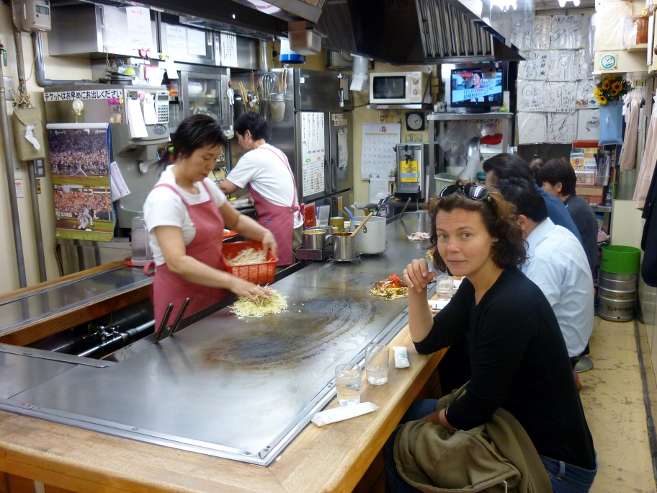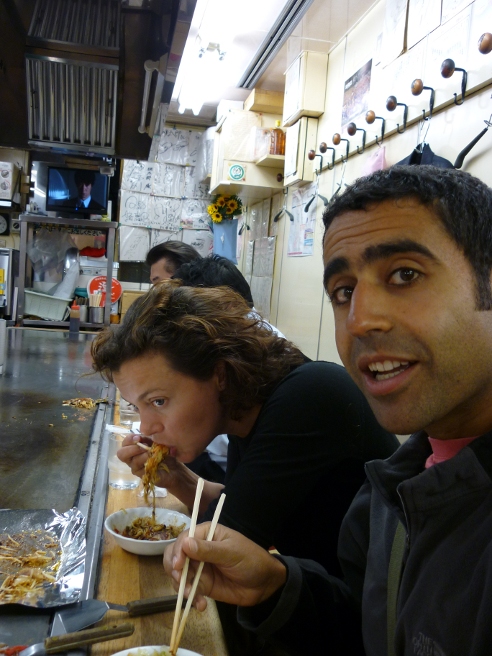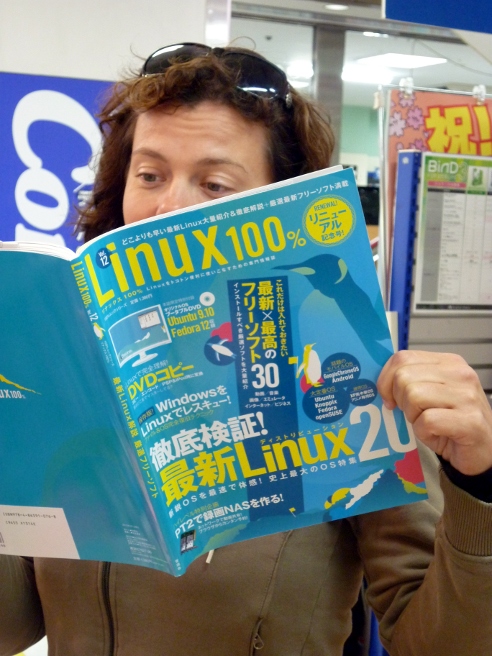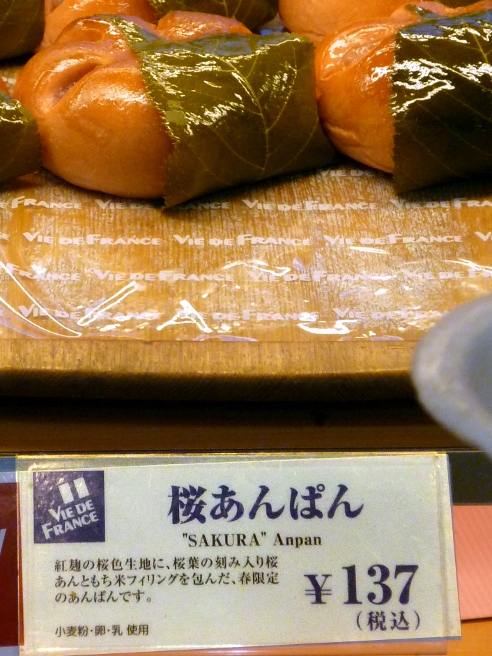Day 87. We spent the day in Hiroshima. Although Hiroshima is a vibrant city in its own right, tourists only visit Hiroshima for one reason, and that’s why we’re here. At the centre of town is Memorial Park and museum, an area dedicated to the memory of those that died in the atomic bomb in 1945, the history of events both leading up to and after the bomb, and to the continued effort of this “City of Peace” to promote the eradication of all nuclear weapons.
At the entrance to the park is “The A Bomb Dome”, the former Centre for Industrial Promotion and one of the few structures left standing after the bomb. Its copper roof melted and all parts of the building that were combustable disintigrated leaving only a shell. The ruin has been left untouched since that day as a reminder of the city’s destruction.
Factoid: The atomic bomb was dropped at 08.15 am on 6th August 1945 and it exploded at a height of 600metres over Hiroshima. Heat from the bomb raised surface temperatures to between 3000 and 4000 degrees Celsius and generated a blast that blew at 440 metres per second (approx 984 miles per hour). Simultaneously an enormous amount of radiation was released causing complete devastation for a 2 kilometre radius.
Unsurprisingly Japan is vehemently against Nuclear Armament and each time a nuclear weapon is tested the Mayor of Hiroshima sends a letter of protest to the leader of the country opposing any further development.
In another area of the park is the Children’s Peace Memorial dedicated to Sadako Sasaki, a girl who was 2 years old and survived the blast. Ten years later she developed leukaemia as a result of exposure to radiation. She started to fold origami paper cranes in the belief that if she folded 1000 she would survive. Unfortunately she died before she reached her goal but her classmates continued her efforts and soon the the crane became a symbol of peace and hope for Hiroshima. Now cranes are folded by children from all over the world and sent to the childrens memorial in remembrance of those who died and suffered.
Factoid: In August 1945, Tsutomu Yamaguchi was sent to Hiroshima on a business trip. With the job done, his co-workers left, but Yamaguchi realized that he had forgotten his personal seal for signing official documents, so he headed back into town to pick it up. That’s when the atomic bomb was dropped on Hiroshima. Badly burned, deaf, and partially blind, he spent a night in the ruins of the city, and then found a railway station on the western edge of the city that was back in operation. He managed to catch a train home to Nagasaki, where — as Yamaguchi explained to his disbelieving boss what had happened in Hiroshima — the second atomic bomb was dropped.
In 2009, the Japanese government certified the still-living Tsutomu Yamaguchi as the first known person to have been at ground zero of both atomic blasts.
After being captivated in the museum and park for nearly four hours we felt thoroughly exhausted. A Japanese man walking his pet sheep went some way to raising our spirits but we were still in need of sustenance.
We visited a four storey building (Okonimimura) filled with stalls that all make the same food, a pancakey – omlettey – beansprout thingy with some squid prawn and ginger thrown in for good measure (okonomiyaki).
We felt restored enough to do some browsing in Hiroshima shopping precinct. Annie tried her hardest to be captivated by the latest edition of a linux magazine in Japanese but was fighting a losing battle.
She settled for a hot chocolate and the popular “anpan” instead.
